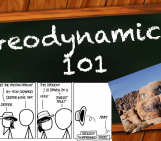
Nerea cannot get enough of writing papers, reports and proposals. However, actually reading scribbles, especially those jotted down by (under)grad students, leaves her a histrionic gasp. She thus ejaculates:
LLSVP or LLVP or LL(S)VP – why must we prolong the acronym wars?
Aupa Nerea,
The Americans. No doubt. It has got to be them. Just like so many things, they’ve ruined that beloved English language. Not that I have a qualm that needs quashing. Don’t be fooled by speculations of the shortening of attention spans over the past few decades, nor by the advent of text/chat speak. I know, ROFLCOPTER. Acronym-fetishism started way before the digital era. I am sure you know that even the Greeks and Romans already had too little time to waste so that they created a need for these ratched constructions of language. Somewhat acceptable in case you need to finger-bleedingly chisel your message in granite for it to last. That four letter embroidery is also much quicker and easier completed. Nowadays we create so much new stuff using similar underlying programs, methods or concepts, both in the scientific and corporate realm, that we have persuaded ourselves we need to come up with a new acronym. Everything needs to be YABA-compatible. And we don’t need much convincing.
Unfortunately this reality is upon us as a society in general, yet academia has its own incentive for keeping up with the acronyms. It sure is much easier to comply with journal character/word restrictions in case you can condense a five-word, eighty nine-character concept into a single word of five characters? Especially when you mention it seventy-three times in your manuscript. I mean, aren’t papers read only by those fluent in jargon? Who cares the general public cannot jump aboard our train of thought? Not to mention not-that-overly-specialist-colleagues? Or those pitiful (under)grad students? For example, can you honestly state, with a straight face nonetheless, that you completely understand the following two sentences (as any and every self-respecting geodynamicist in fact should): “Far above the BEAMS, the MASH zone is cut by migrating STEPs leaving deformed lithosphere in its path along the edge of the LIP so that we can test the WLI by using the latest GRACE products. Further up the subduction zone, the plate interface is characterized by ETS, specifically by LFEs and SSEs, as observed through a joint interpretation of the ISC catalogue, GNSS data and DInSAR-processed MAI from Envisat.”
To conclude; is it really necessary to keep going all-in with the acronyms, or should we rather adopt a proper writing style and refrain from acronym redundancy? Surely we can deal with reading an additional couple of characters each time we go through 5000-25000 word papers. Moreover, in case we indeed choose to adopt a proper writing style, we can even find stylistic ways to avoid mentioning those horrid acronyms. We might even make sense to others, (non-)specialists in particular, and expand upon our little circle of knowledge gluttons. Who knows, it could very well lead to a proliferation in citations.
Lo saludo afectuosamente y con mil abrazos mentalmentos,
The Sassy Scientist
PS: This post was written whilst ALOL yet B4 PSML. BBFN.






brahim d staps
Very good article thanks
tassnime
Great, thanks for sharing this blog post.Much thanks again.
tassnime
thanks for sharing this blog post..
tassnime
very nice blog post! thank you..
tassnime
Great, thanks for sharing this blog post.
chia
thank you very nice article
ferahtia.FS
Your posts are very instructive, which I later learned a lot from. It was great I hope you get more new posts! I am one of your Permanent Visitors
ferahtia.FS
merci pour les informations
tassnime
thanks for the helpful information shared.
ferahtia_FS
Merci beaucoup pour vos efforts
tassnime
Lovely memoir. Thank.you.
tita
good post
http://virtuelcampus.univ-msila.dz/inst-gtu/
saber
As usual, great creativity
And it’s worth pursuing.
Thanks for the information provided, knowing that I am one of your loving visitors.
kheloufi
thank you for sharing this article post…